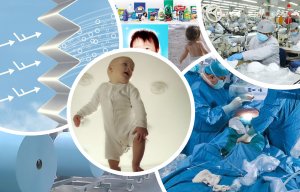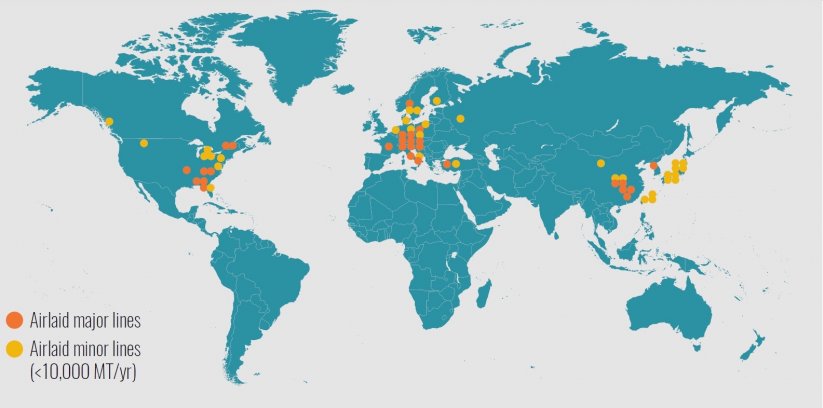
Solid growth for nonwovens to 2027
New Smithers report predicts sales value will increase from $2.1 billion to $2.9 billion over five-year period.

8th December 2022
Innovation in Textiles
|
Leatherhead, UK & Akron, OH, USA
Accelerating demand for more sustainable wipes, feminine hygiene goods and food industry products will be central to driving new consumption of airlaid nonwovens over the next five years. The latest exclusive analysis from Smithers charts this rapid market evolution including the use of airlaid in new end-use segments, the installation of new production lines, and the deeper penetration of thermal bonded airlaid (TBAL).
These will all contribute to global consumption rising significantly from 574,750 tonnes in 2022 to 768,800 tonnes in 2027, according to exclusive expert forecasting in The Future of Airlaid Nonwovens to 2027 from Smithers. Across the same five-year period, sales value will increase from $2.1 billion to $2.9 billion, at constant prices; equivalent to a compound annual growth rate of 7.7%.
To match this rising demand, industry will need to respond to numerous changes. Airlaid has historically been one of the most conservative segments of nonwoven production; limited investment in new facilities has led to tight demand-supply ratios. Across around 90 commercial-scale airlaid manufacturing lines worldwide examined in Smithers’ study, it is estimated that around 92% capacity is used in 2022.
Projections for 2022-27 show an inflection in the demand-supply curve. This will require the installation of several new major airlaid assets just to maintain current levels of supply, with Smithers forecasting that demand-supply ratio will remain in the low to mid 90% range even beyond 2027. Larger established producers are best positioned to profit from this increased demand, in traditional end-uses. For newer entrants several emerging segments will prove more attractive – packaging, insulation and moulded consumer products – installing new airlaid capacity to specifically make the heavier substrates required.
Airlaid has a major advantage as one of the most sustainable nonwoven processes. Over three quarters of its material by weight is fluff pulp, with a correspondingly lower use of plastics. Furthermore, airlaid is a dry-form process, which requires little water and fewer processing chemicals. Consumer brands are searching for more planet-friendly solutions. This will support wider use of airlaid in feminine hygiene and wipes. Airlaid substrates allow brand owners to stay on the right side of the debate over single-use plastics with goods that can also been sold as premium prices.
The other major uses are in table coverings, a segment recovering after Covid disruption; and in absorbent meat pads for active packaging, where material sustainability is again a key advantage for airlaids.
Despite being a largely saturated market for nonwovens, sustainability concerns including tightening rules on single-use plastics will make Europe the fastest growing market for airlaids through to 2027. In contrast demand for airlaids in Asia and North America will slow across the next five years.
Detailed expert forecasting for this market is now available in The Future of Airlaid Nonwovens to 2027 from Smithers. This is founded on an exclusive market dataset segmented by airlaid process, raw material input, end-use application, and geographic region. The current and future market outlook is further contextualised by a detailed examination of forthcoming market, regulatory, and technology developments; and profiles of the leading eleven global manufacturers.
This vital expert industry study is available to purchase via the link below now.

Business intelligence for the fibre, textiles and apparel industries: technologies, innovations, markets, investments, trade policy, sourcing, strategy...
Find out more